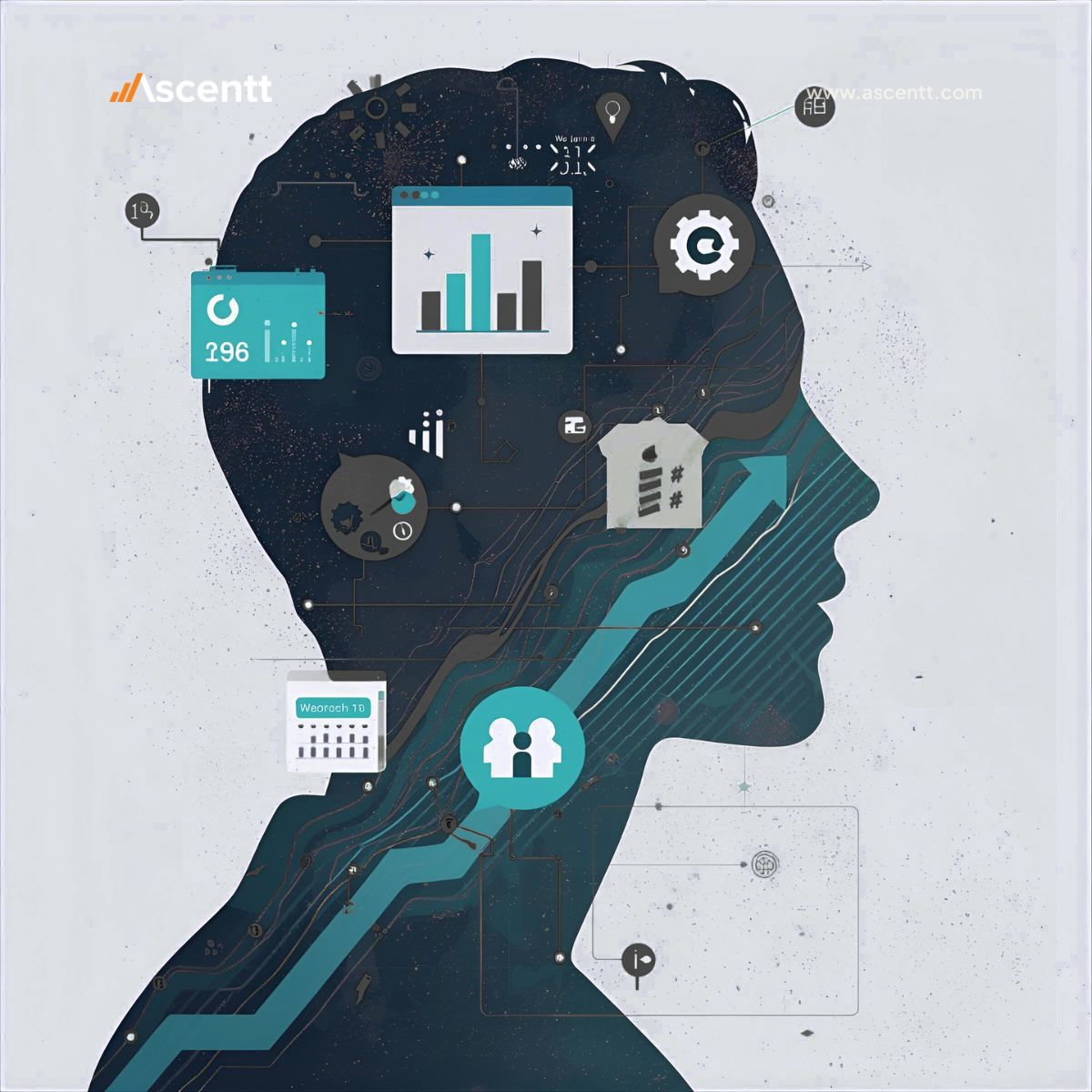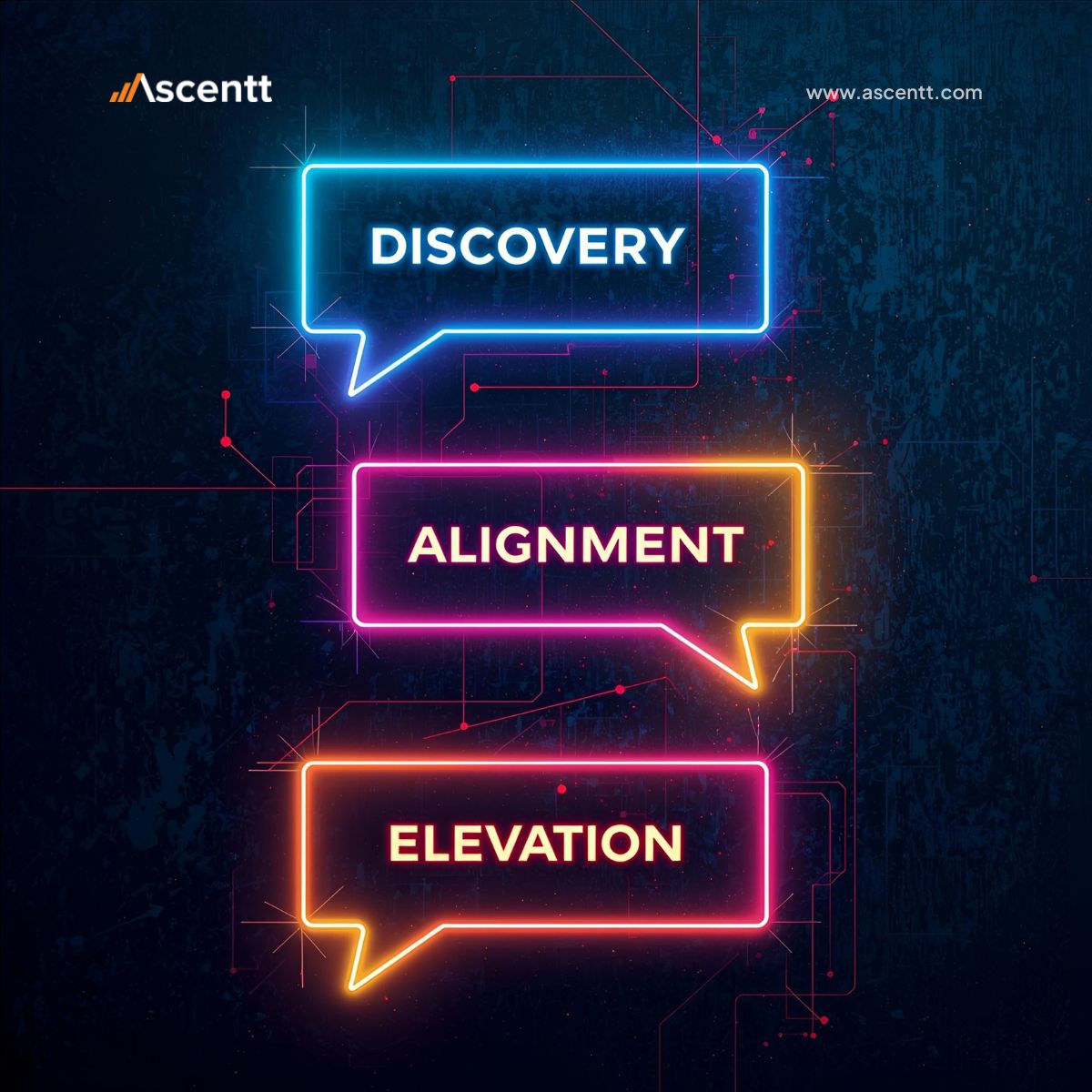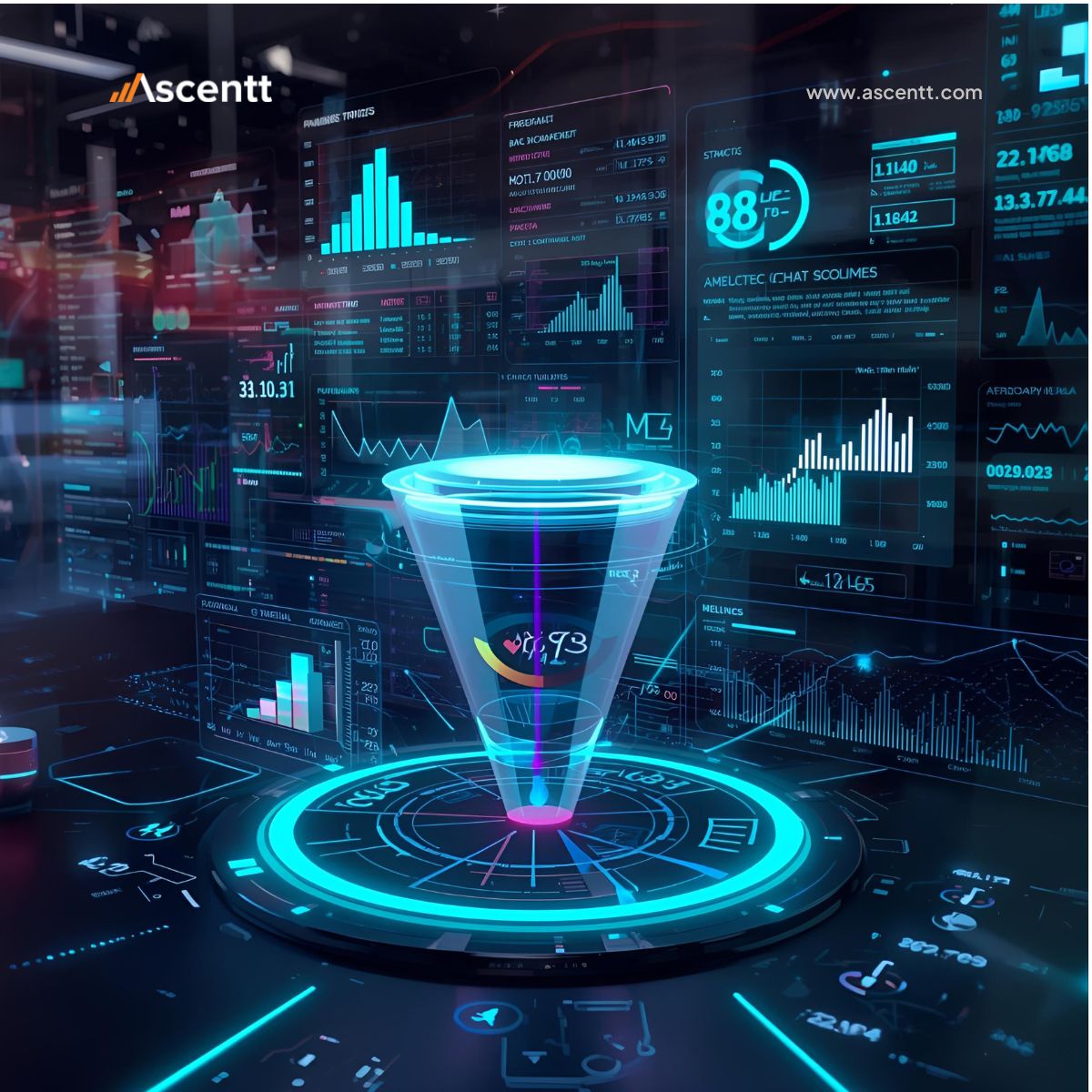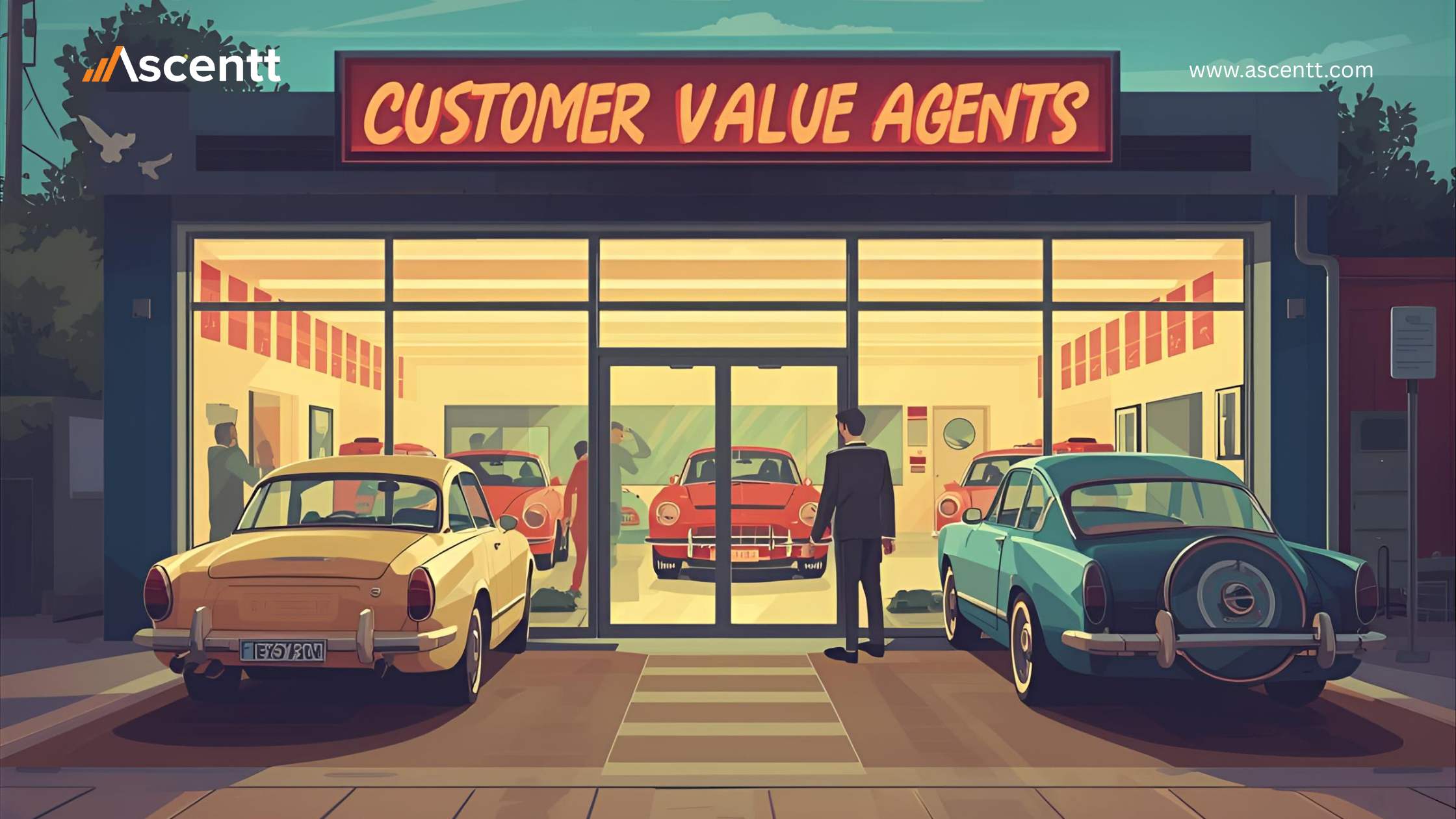Your team attracts plenty of leads. Yet the question remains: who is shaping demand before a test drive is booked? In auto sales, that moment decides whether a shopper chooses your model, trims up, or walks away. Customer Value Agents place guided conversation at the center of the journey. They do more than collect names. They learn intent in real time, match needs with inventory and offers, and nudge the next best action. If your dealership or OEM network wants a higher quality pipeline, start with how conversations create value, not just how forms capture it.
Customer Insight Agents – real time buyer profiling and recommendation logic

A Customer Insight Agent listens across web chat, WhatsApp, SMS, and showroom tablets. It builds a living profile as the buyer speaks. The profile fuses three layers:
- Signals the shopper shares: use case, family size, commute length, color preferences, timeline, budget, payment style, trade in.
- Signals the system knows: regional incentives, current inventory by VIN, test drive calendars, finance approvals, service history for returning owners.
- Signals inferred from behavior: scroll depth on feature pages, repeat visits to safety content, shifts from hatchback to SUV filters, interest in ADAS or hybrid.
Recommendation logic combines a rules layer with a learning layer. The rules layer enforces compliance and brand guardrails. For example, never suggest a variant that is out of stock or a finance plan that fails the budget band. The learning layer ranks options by predicted satisfaction and purchase probability. It uses similarity to past buyers, local demand curves, and inventory pressure. The agent then explains the why behind each suggestion. Transparency matters. The shopper sees reasons in plain language. Example: long highway commute plus winter climate equals strong case for the all-wheel drive trim with adaptive cruise.
The output is not a single product pitch. It is a set of next steps that fit the person. Book a test drive at a nearby time slot, pre-qualify finance, hold a VIN, or compare two trims with a simple difference view. Every step reduces friction.
Demand shaping through conversational flows – predictive suggestion, upsell, cross sell

Demand shaping means guiding preference, not forcing it. The conversational flow has three moves:
Discover: the agent uncovers the primary job to be done. School runs, weekend trips, ride hailing work, or first car for a new graduate. It confirms constraints early. Parking space, ground clearance needs, fuel preference, and monthly outlay.
Align: the agent narrows to a short list that fits the job and constraints. It introduces a hero option and a contrast option. The contrast is deliberate. It teaches trade offs that matter. For example, hybrid lowers fuel cost while turbo petrol improves highway response.
Elevate: the agent proposes value adds that raise utility, not just price. Example flows:
- Predictive suggestion: if the buyer values safety and often drives at night, the agent recommends the trim with additional airbags and matrix LED headlamps. It cites how these features map to the stated commute.
- Upsell: if the buyer selects base trim for budget reasons, the agent simulates total cost over three years. If a mid-trim reduces fuel or maintenance enough to offset the payment gap, the agent offers a limited time upgrade with transparent math.
- Cross sell: if the buyer plans long trips, the agent bundles roof rails, extended warranty, and roadside assistance. It frames the bundle as risk reduction, not as an add on list.
The flow adjusts to store reality. If a popular variant is low in stock, the agent can pull a nearby dealer transfer or move the buyer to a close substitute with a delivery date. If a city has congestion rules that favor hybrids, it highlights that policy context. The goal is a fair, helpful conversation that builds trust while increasing average order value and attachment rate.
Case study simulation – integrating support LLMs and forecasting agents into the sales funnel
Imagine a mid sized dealer group with twenty stores and mixed urban and suburban demand. The team deploys two agents in the same funnel:
- Support LLM at the front door: answers product questions, books test drives, and routes complex queries to human sales. It speaks in brand voice and keeps an audit trail of every recommendation and handoff.
- Forecasting Agent behind the scenes: estimates near term demand by model, trim, and color. It reads chat transcripts, lead sources, and regional events. It then signals which variants will move fast and where price support is needed.
How the funnel works
- A shopper chats about weekend trips and safety for a toddler. The Support LLM captures intent and proposes two SUV trims with child seat anchors and lane assistance.
- The Forecasting Agent flags that the preferred color in mid trim will stock out next week. The conversation adapts. The LLM offers an in stock alternative with a protection package and a delivery window.
- The shopper books a test drive, receives a finance pre check link, and gets a comparison sheet via email and WhatsApp.
- After the test drive, the LLM follows up with a summary of agreed points and a transparent quote breakdown. A human salesperson joins on high intent signals.
Why this works
- The Support LLM reduces wait time and keeps answers consistent.
- The Forecasting Agent aligns guidance with supply reality.
- Together they raise show rate, improve variant mix, and shorten cycle time from first chat to order.
For deeper detail, point readers to your internal page on Customer Support LLMs and Forecasting Agent. The case can include A and B cohorts over four to six weeks to quantify conversion and attachment lift.
Measuring engagement – how agent interactions translate into purchase intent and lead scoring

Strong demand shaping needs strong measurement. Move beyond raw chat volume. Track signals that map to intent and value.
Engagement quality
- Question resolution rate within two turns.
- Time for next action: test drive booked, finance checked, VIN reserved.
- Content depth: features compared, trims contrasted, ownership costs viewed.
Commercial intent
- Propensity to buy score that updates after each turn. Inputs include budget clarity, urgency, chosen variant, and response to upgrade math.
- Variant commitment indicator: does the buyer keep returning to the same trim and color.
- Finance readiness: pre check completion, down payment clarity, preferred term.
Sales outcomes
- Show rate and order rate by agent assisted vs human only paths.
- Attachment rate for service plans and protection bundles.
- Cycle time from first message to order and to delivery.
Attribution and governance
- Conversation level UTM stitching to original source.
- Transparent reason codes for every recommendation.
- Opt outs respected, with a visible privacy preference center.
Lead scoring should blend these measures. A simple version uses a weighted index. For example, test drive booked may carry more weight than pages viewed. A more advanced version uses a calibrated model that predicts order probability within a time window. Sales and marketing can then act on the same score. High scores trigger rapid human follow up. Mid scores get education flows and inventory updates. Low scores go to nurture without pressure.
Conclusion
Customer Value Agents are not chat toys. They are decision partners that align shopper needs, dealer economics, and supply constraints. In auto sales, that alignment shapes demand long before a contract is signed. Start by mapping one or two high impact flows. Pair a Support LLM for consistent answers with a Forecasting Agent that respects inventory and incentives. Instrument the funnel so every suggestion has a clear reason and a measurable result.
Ascentt brings vertical AI expertise for automotive use cases. The team builds value driven agents with explainable logic, retail grade integrations, and measurable business outcomes. If you want a blueprint that raises conversion, improves variant mix, and shortens cycle time. Schedule a working session with Ascentt to design your demand shaping agents and a fast path to pilot.
FAQs
1. What makes a Customer Value Agent different from a basic chatbot or a lead form?
A Customer Value Agent shapes demand instead of only capturing details. It builds a live profile from what the shopper says and what the system knows, such as inventory, incentives, and finance options. It recommends the next best action with clear reasons, books test drives, runs upgrade math, and adapts to stock reality. Every turn is measured for intent, not just volume.
2. What does a practical pilot look like for a multi store dealer group?
Start with two journeys: new inquiries and post test drive follow ups. Deploy a Support LLM for first response and a Forecasting Agent to align guidance with supply. Run for six weeks with A and B cohorts. Success criteria include show rate, order rate, variant mix, attachment rate, and cycle time. Train sales on handoff cues and message templates so human advisors close high intent leads faster.
3. How do we prove that agent conversations increase purchase intent, not just chats?
Track milestones that signal commercial momentum: test drive booked, finance precheck completed, VIN reserved, and return visits to the same trim and color. Use a weighted lead score that updates after each turn. Compare agent assisted paths to human only paths. Report uplift with confidence intervals and keep explanation logs for every suggestion to maintain trust and governance.




